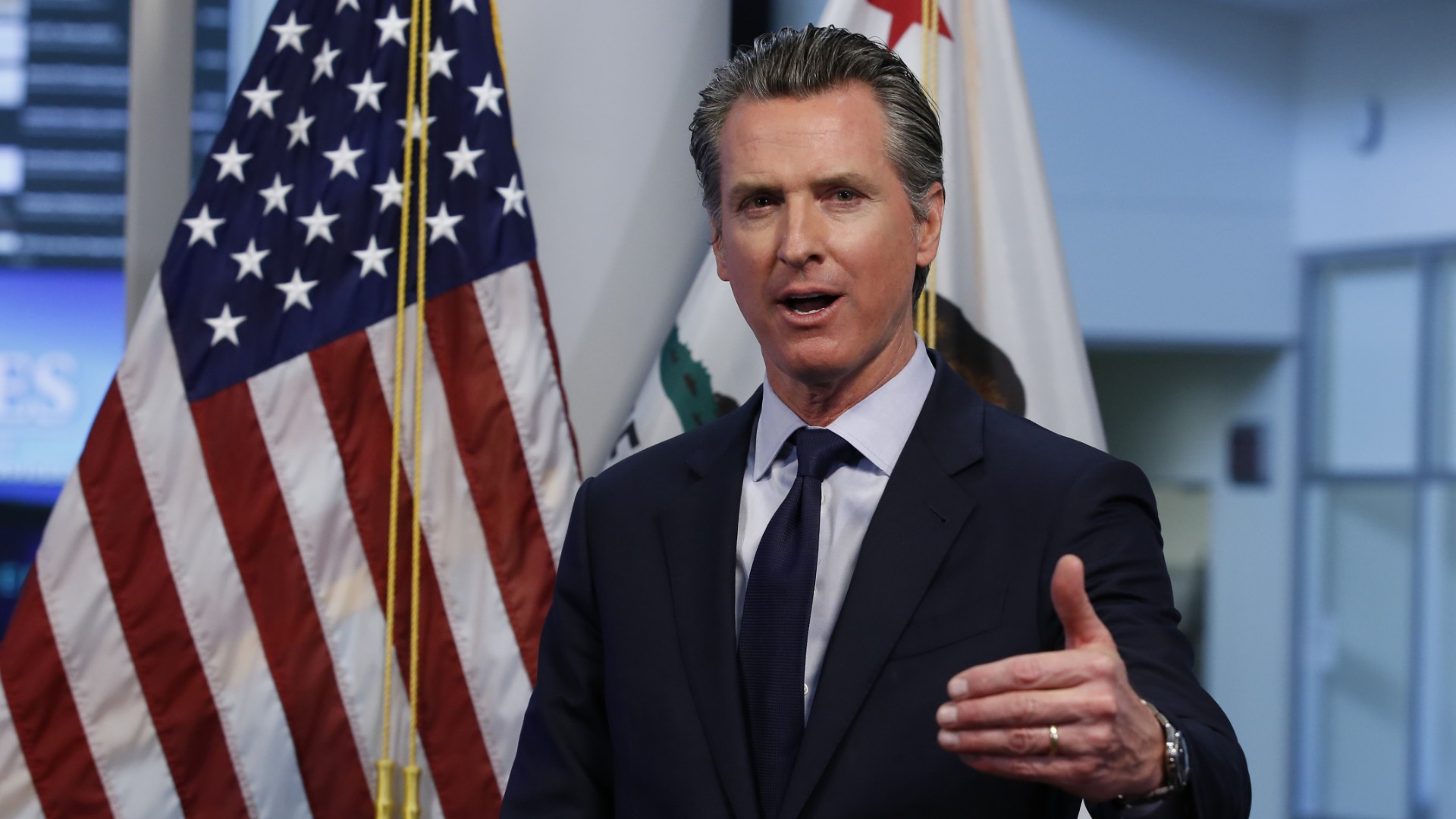California Gov. Gavin Newsom proposed $14 billion in budget cuts on Thursday because of the coronavirus, with more than half coming at the expense of public schools already struggling to educate children from afar during a pandemic.
The cuts are part of a plan to cover a $54.3 billion budget deficit caused by plummeting state revenues after a mandatory, statewide stay-at-home order forced most businesses to close and put more than 4.7 million people out of work.
Thursday, Newsom proposed to fill that hole through a combination of cuts, tax increases, canceled spending, internal borrowing and tapping the state's reserves. It also includes a 10% pay cut for all state workers, including the governor himself. Overall, the $203 billion spending plan is about 5% lower than the budget lawmakers approved last year.
“Nothing breaks my heart more than having to make budget cuts,” he said. “There’s a human being behind every single number.”
Get a weekly recap of the latest San Francisco Bay Area housing news. Sign up for NBC Bay Area’s Housing Deconstructed newsletter.
Newsom said all of those cuts could be avoided if the federal government approves a $1 trillion aid package for state and local governments. The state would need that money before July 1 to avoid the cuts, a daunting task considering the partisan divide between Democrats who control the U.S. House of Representatives and the Republicans in charge of the U.S. Senate.
“Depending on the federal government is not going to be a solution,” said Republican Sen. Jim Nielsen of Red Bluff.
Public education, which accounts for 40% of all state general fund spending, was the hardest hit. School districts get money based on a formula outlined in the state Constitution that is based on revenues, per capita personal income and school attendance.
California
That guarantee dropped by $19 billion. But Newsom added a bunch of money to offset those losses. He wants to temporarily eliminate some business tax deductions to create $4.5 billion in new revenue. Plus, he wants to give school districts $4 billion from the federal Coronavirus Relief Fund. Even with those changes, schools are looking at a loss of $7.5 billion compared to the budget Newsom proposed in January.
“They will be the single largest cuts public schools have ever had in California history," said Kevin Gordon, a lobbyist who represents most public school districts. “Public school officials do not know where to start when it comes to trying to reopen with so much less money to work with.”
The 10% pay cut for the more than 233,000 state workers would save about $2.8 billion and includes firefighters and health care workers. The lowest-paid workers would still get planned raises, however, to bring them up to the state's $15 per hour minimum wage law.
The pay cut proposal is just the starting point for a negotiation with public-sector labor unions. The Service Employees International Union, which represents about 96,000 state workers, plans to try to negotiate an alternative.
“We could put our head in the sand and say, ‘let’s take it,’ ” said Yvonne Walker, president of SEIU Local 1000. “But you know what local 1000? We’re not head-in-the-sand people.”
Just four months ago, Newsom proposed a $222.2 billion spending plan that included a nearly $6 billion surplus and a host of new programs. Thursday, nearly all of that new spending disappeared. That included eliminating plans to give government-funded health insurance to low-income adults 65 and older living in the country illegally. And it cancels a plan to make more older adults eligible for Medicaid.
“These potential cuts will be a body blow to the health care system we all rely on, at the very time we need it funded more than ever, in the middle of a pandemic," said Anthony Wright, executive director of Health Access California, a statewide health care consumer advocacy group.
Assembly Speaker Anthony Rendon called the state’s budget picture grim but said it was too soon to know which of Newsom's proposed cuts his Democratic caucus would support. He said education and the social safety net must be priorities, and he, like Newsom, said the state needs the federal government's help.
“We have well-placed Republicans from California in Congress, and we’re going to obviously appeal to them and make sure they remember, obviously, where they got elected from," Rendon said.
California's financial downturn is cushioned by a $16 billion rainy day fund set aside during the good times. Newsom's budget, which now must be negotiated with the state Legislature by June 15, calls for spending the rainy day fund down over the next three years, starting with roughly $8 billion in the upcoming year. He's also tapping two other reserve funds for another $1 billion.
The state would also spend more than $200 million to boost the state’s preparations for looming wildfires and other disasters, including hiring another 500 firefighters and 100 support personnel to help make up for the loss of dozens of inmate firefighters who were paroled to ease the risk of coronavirus outbreaks.
Nothing was safe from the cuts, including funding to combat homelessness, a topic that Newsom devoted his entire “State of the State” speech to in February. He had planned to give $750 million in state funding to local governments and other groups to pay for homeless services. Instead, that money will be replaced by federal money and used to buy hotels and motels to house the homeless during the pandemic.
“I am deeply concerned that we are shifting away from addressing our housing and homelessness crises,” said Democratic Assemblyman David Chiu of San Francisco. “I am disappointed to see funding for cities to address homelessness eliminated.”
___
Associated Press writers Cuneyt Dil, Kathleen Ronayne and Don Thompson in Sacramento contributed to this report.



